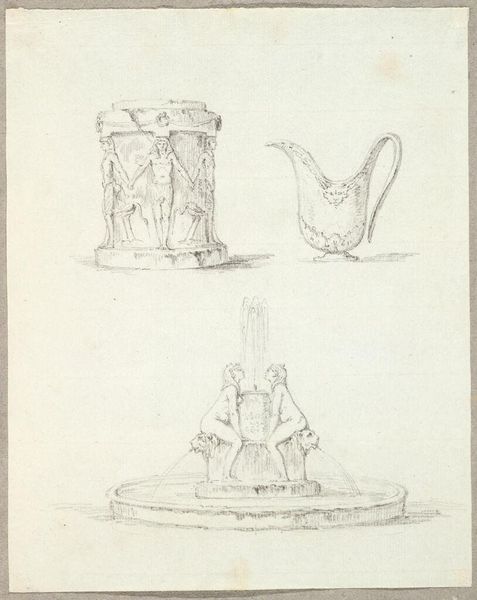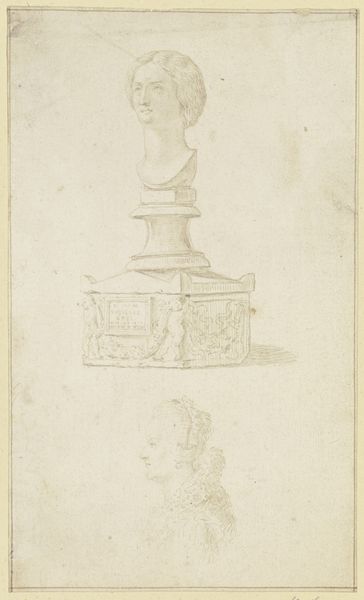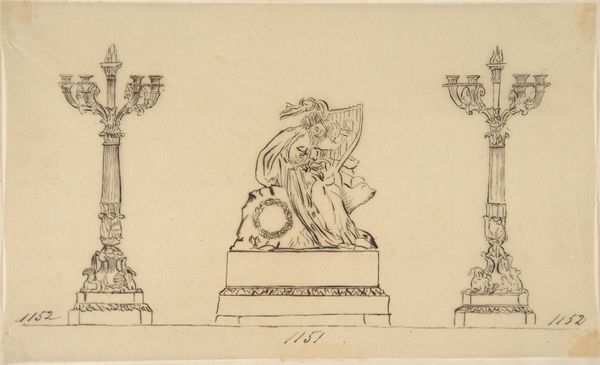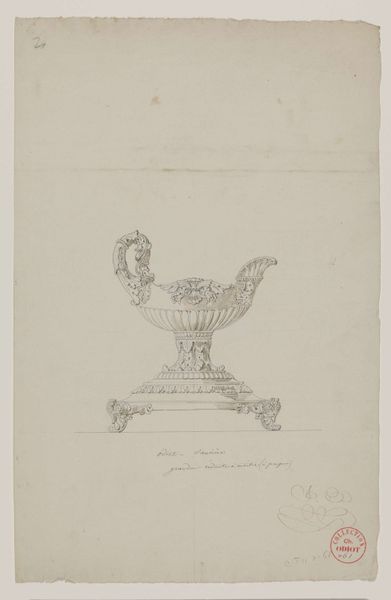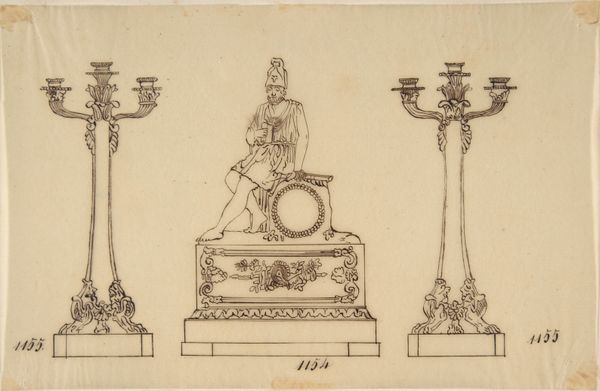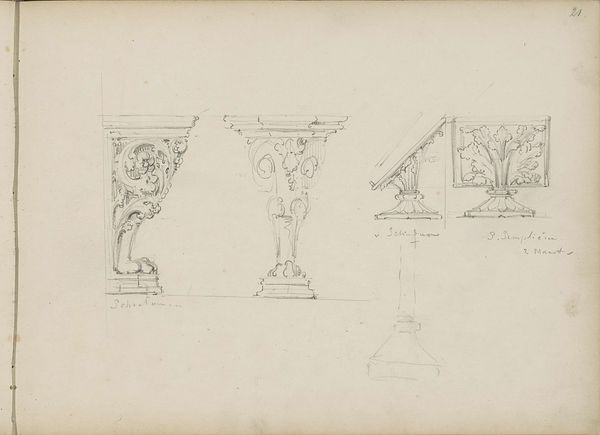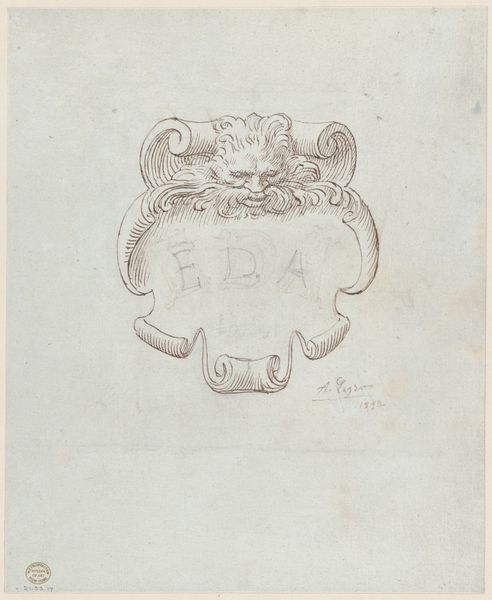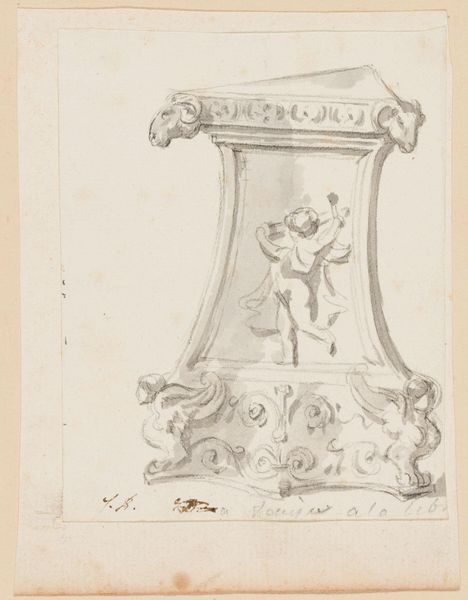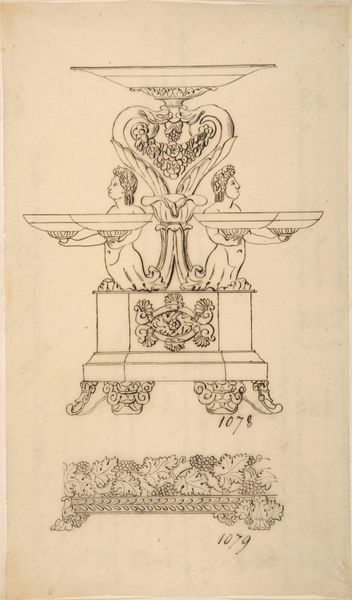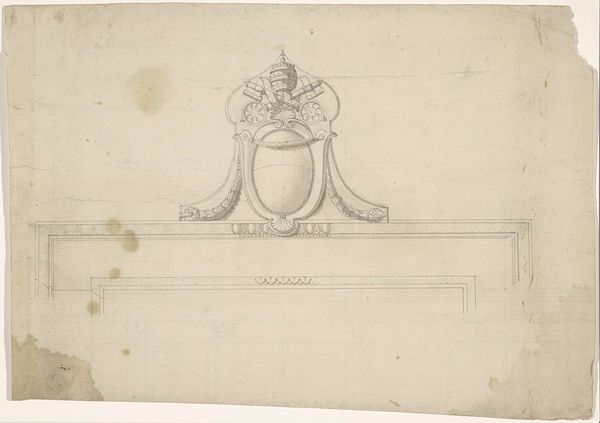
drawing, paper, pencil
#
drawing
#
aged paper
#
toned paper
#
light pencil work
#
pencil sketch
#
sketch book
#
paper
#
form
#
personal sketchbook
#
ink drawing experimentation
#
geometric
#
pen-ink sketch
#
pencil
#
line
#
sketchbook drawing
#
academic-art
#
sketchbook art
Copyright: Rijks Museum: Open Domain
Curator: Here we have a drawing entitled "Decoratiemotief en een versierd basement," dating from 1834-1906, attributed to Maria Vos. It's currently held in the Rijksmuseum. Editor: Immediately, the fragility and precision of this piece strike me. It has such an airy quality; it’s a pale sketch against what looks to be aged paper, the lines rendered so delicately. Curator: It's rendered in pencil, or perhaps pen and ink – it seems to capture the artist’s exploration of form. These kinds of sketches often reflect academic exercises, revealing artistic interests in line and geometrical designs and their deployment within architectural forms. We see both the ornament motif and basement sketch as separate forms but I suspect were observed together. Editor: Absolutely, and consider the motifs themselves. Swirls and the little masks convey a specific kind of romanticized classicism. We see similar design features across furniture and interiors of the time—echoes of past empires, distilled through 19th-century taste. Curator: Indeed, Vos would likely have been working in the lineage of craft production where such historical forms were mediated for an increasingly commercial world. This is likely not art in the sense of ‘fine art,’ but a preparation piece, for say the development of molds in plaster or even building supports. Editor: Precisely. These emblems wouldn’t simply be decorative; they become signifiers. Perhaps this specific aesthetic reflected ideas about order, stability, and legacy in an era defined by rapid change. Curator: I find myself thinking about what the use-value of this work represents. The sketch allows for both the standardization and control of sculptural designs in furniture and architecture during mass manufacture. Editor: And it makes one wonder what sort of cultural echoes it carries with it, intentionally or otherwise? How were such design elements intended to make one feel in one’s domestic space, and were the labor conditions of manufacture implicit? Curator: That’s a critical observation – there's a whole network of aesthetic influence tied to the socioeconomic relations. Thanks to the sketchbook nature of it all, and it makes one wonder how these practices are transferred via educational systems, say across trade schools and ateliers? Editor: Thank you. That pushes me to consider how artists borrow from these visual motifs to generate their symbolic language within other works and settings entirely. Curator: And so, what initially appeared as simple forms contain an entire industrial process with various historical connections, political baggage, and creative transformations! Editor: I concur. By observing such visual language closely, we unearth how power and meaning become materialized.
Comments
No comments
Be the first to comment and join the conversation on the ultimate creative platform.
